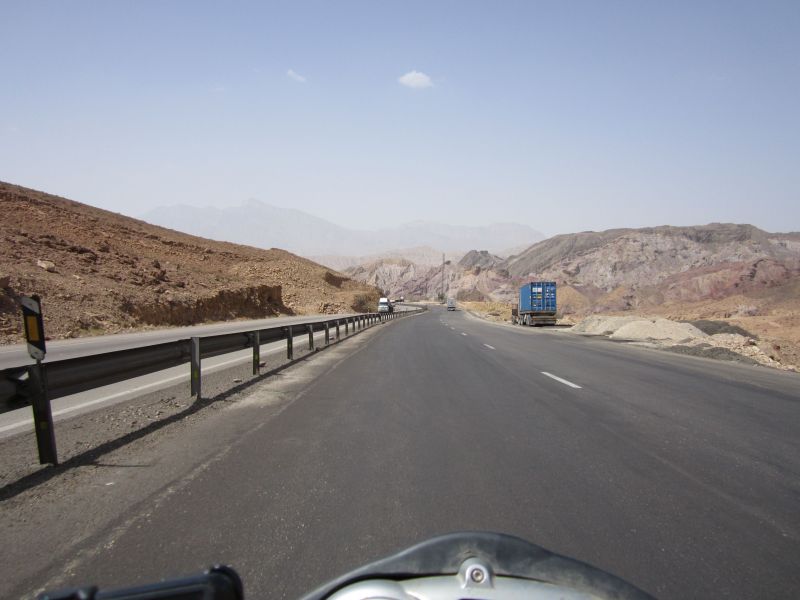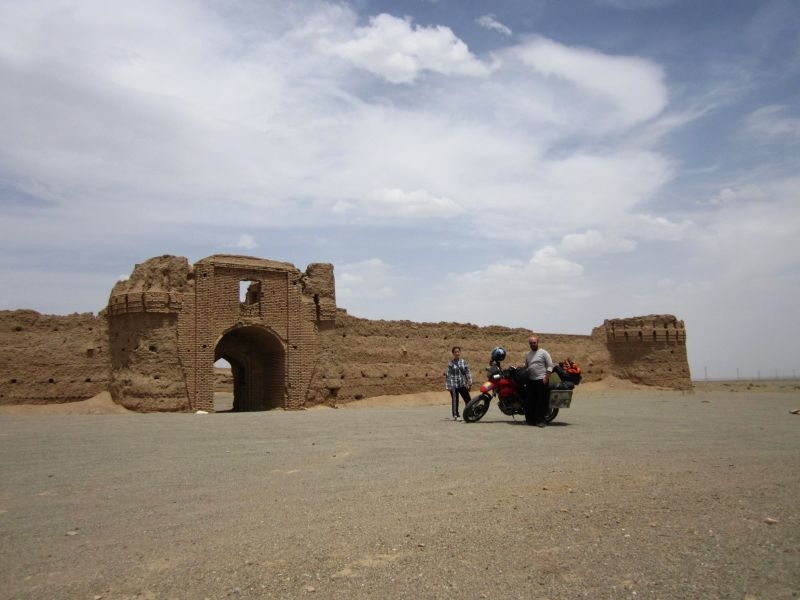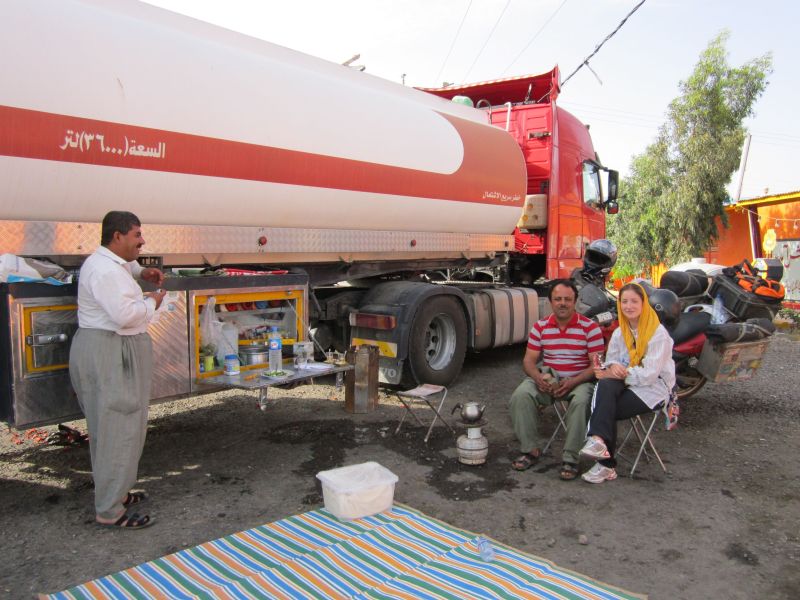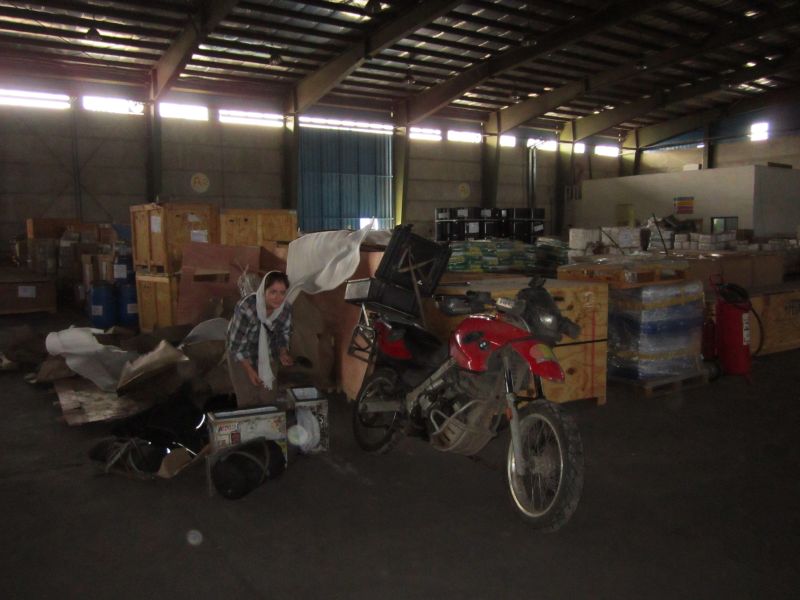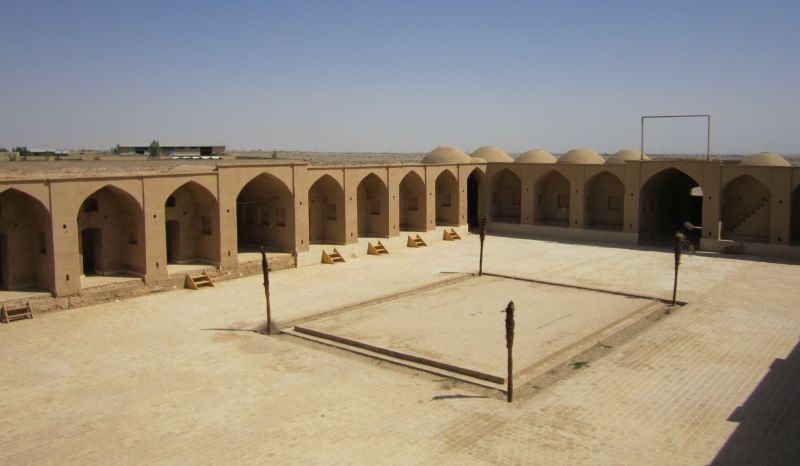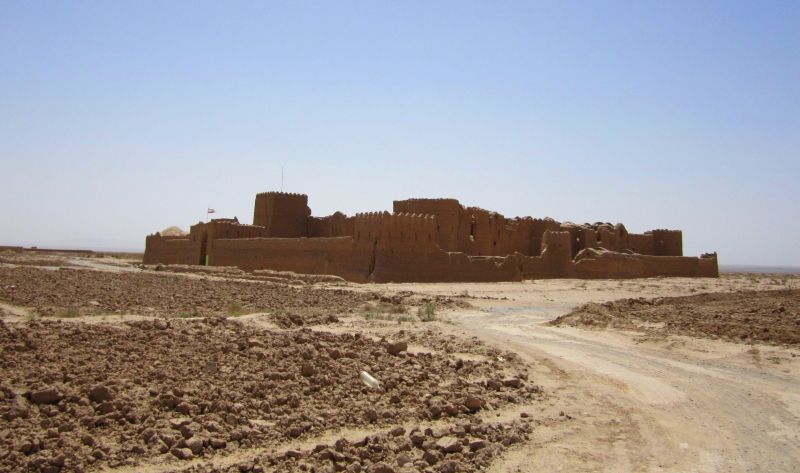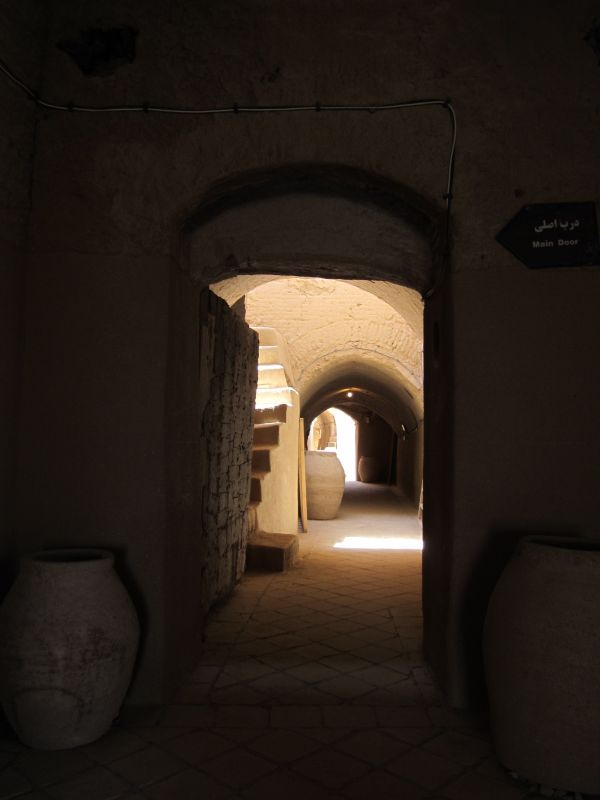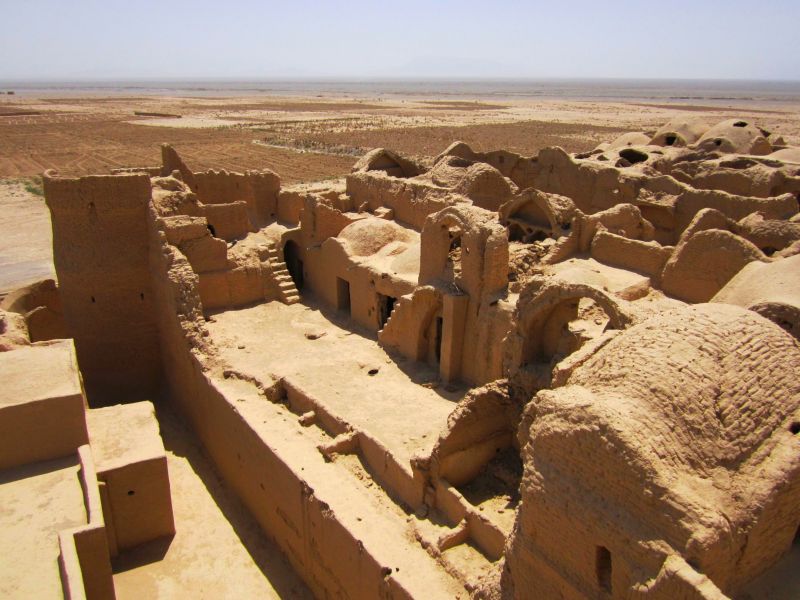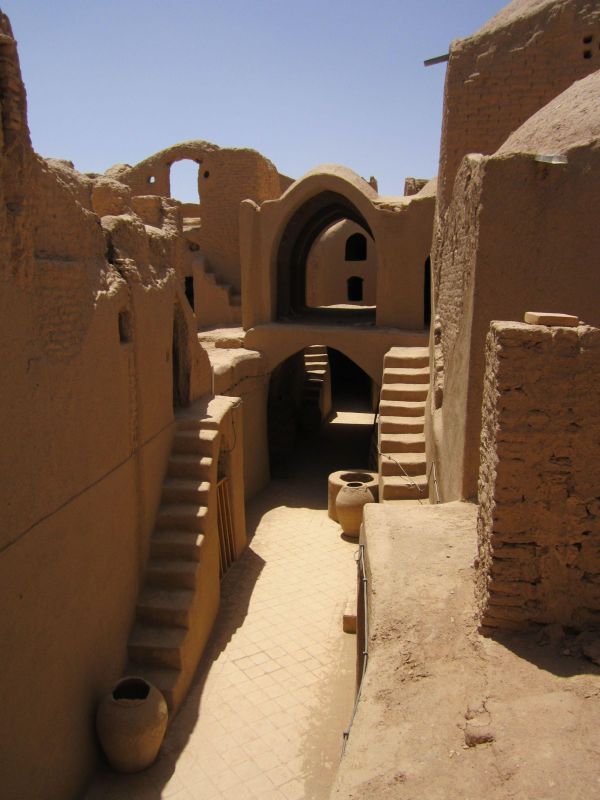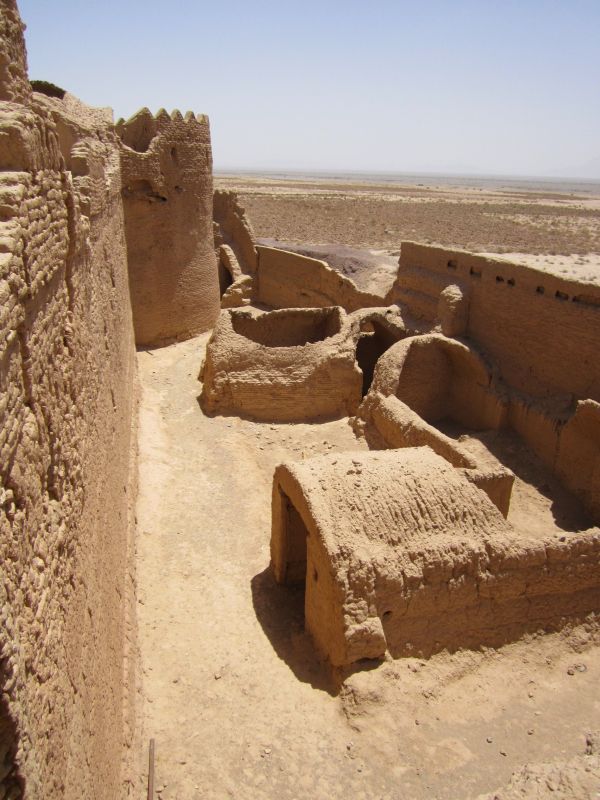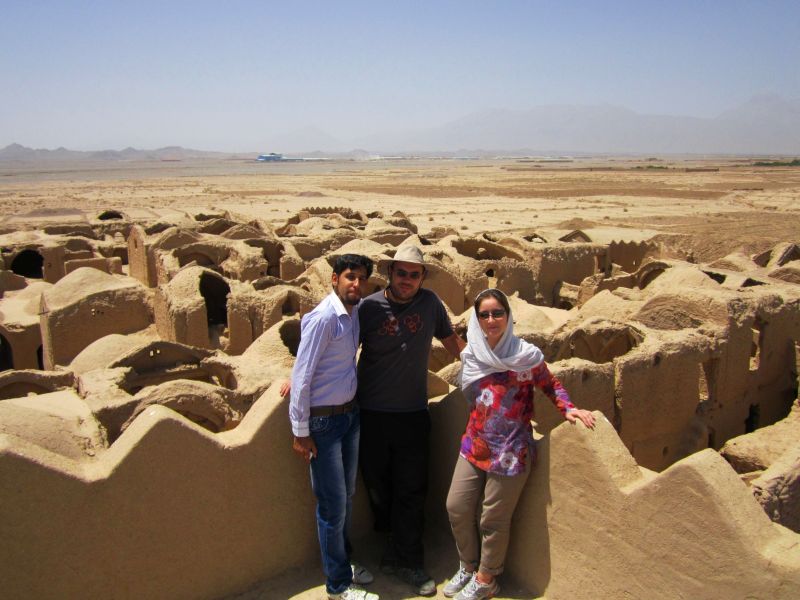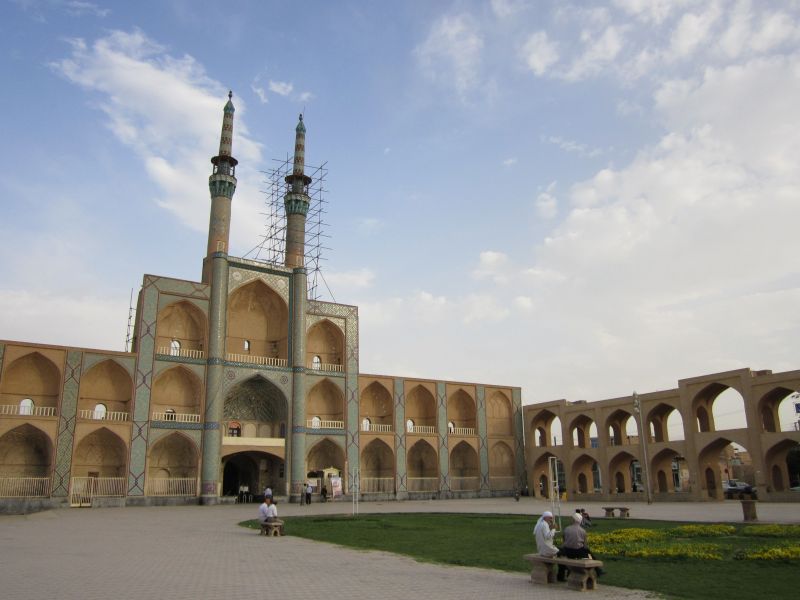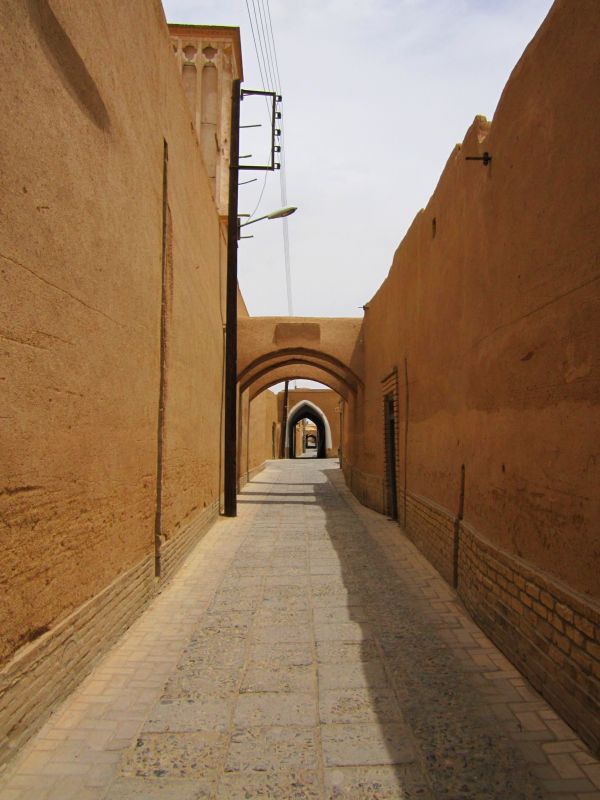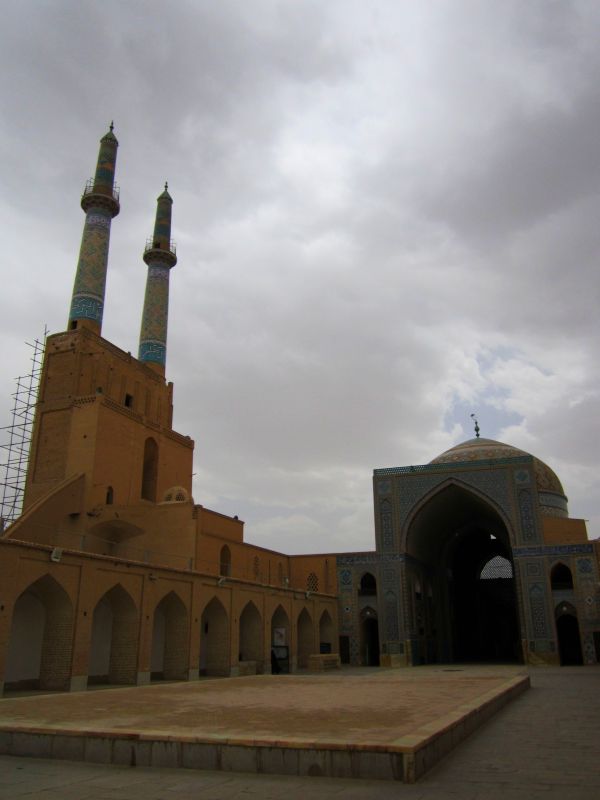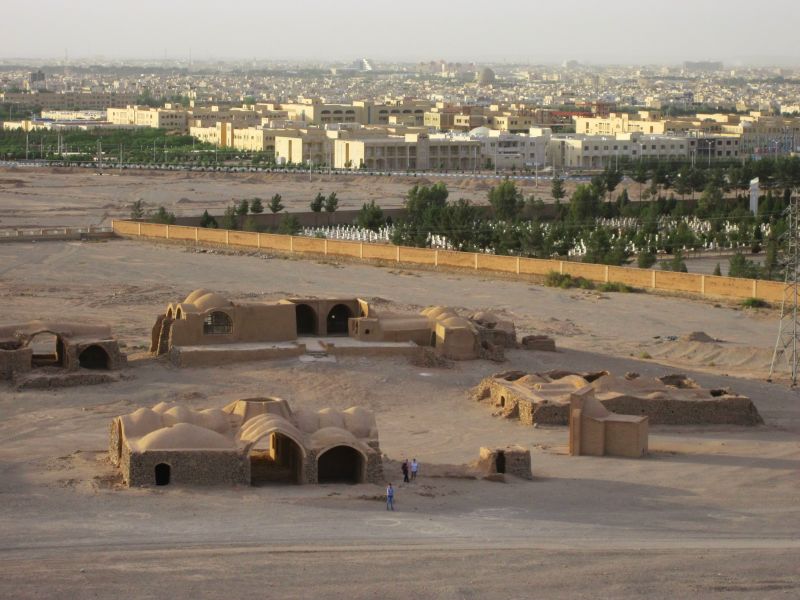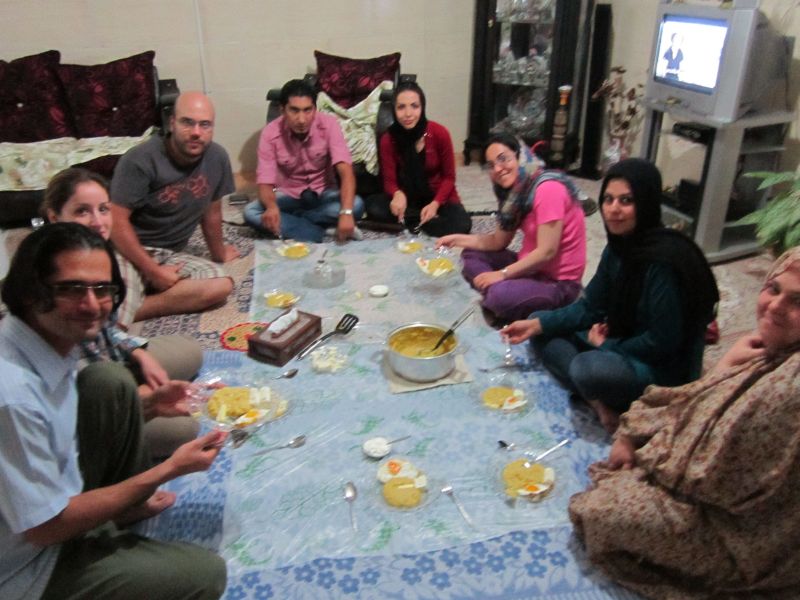Bandar Abbas
After a 12 hrs trip by night train we arrived in Bandar Abbas. Even though we got off at 7AM, the heat was unbearable. By noon, it was already extreme. I never felt such heat before in my life (from natural causes). You have to feel it to believe it!
In the first picture we are with Hamid (from the ocean shipping company) and his family at the Strait of Hormuz beach, separating the Gulf of Oman from the Persian Gulf. The water was hotter than I would use for a shower!
The next day, after some 6 hours spent in the port, we managed to unleash Palomina. The process involved obtaining approvals, signatures and stamps from more than 20 officials but, as opposed to the situation in Vietnam, all of them were friendly and even served us with tea and coffee while waiting.
Now, with only 13 days left on our visa, we are preparing to cross the desert as soon as possible, to use the remaining time in Tehran and Tabriz.
Funny thing: while in other Asian countries the local calendar is used merely for ceremonial and religious purposes, the Persian calendar is used in Iran for all official business. Meaning that, in my Carnet de Passage, the entry date for Palomina was recorded as 31.02.1391 🙂
Saryazd caravanserai + fortress
Not too far from Yazd is located the Saryazd village. We found there a relatively new caravanserai (first picture) dating from the Safavid era (XVI – XVIII centuries). It was used as a resting place for caravans. The central area was for storage, the rooms on the side were for the people and in the corners there is an area designated for the animals.
But the main attraction was the fortress, originally built during the Sassanid era (III – VII centuries). It was used mainly for defensive purposes and for storing goods, animals and valuables during invasions. In the meantime, some of the roofs have collapsed, but most stairs and corridors are still accessible. The fortress was locked but our new Yazdi friend, Mostafa, found the key holder. He opened the gate and we enjoyed mostly unrestricted access to the maze – like structure. Exploring it was truly exciting, bringing back memories from a great classic game, Prince of Persia.
Yazd
We spent 3 days in Yazd. There is a nice old part of town worth visiting, with mud brick hotels, museums and narrow alleys.
We stayed at Pooya and Goli, a wonderful couple that, although very busy, found time to chat with us late in the evenings as well as cook delicious Iranian dishes.
We choose to return the favor by preparing “tochitura cu mamaliga”, a traditional Romanian dish. Due to lack of key ingredients (pork and sausage) we decided to serve “mamaliga” with cheese and egg and then prepare a second dish that was more like the Mexican fajitas.
Toodeshk
After Na’in we stopped at Tak-Taku Homestay (09139165752) in Toodeshk. Riding the bus in the Iranian heat got us really exhausted and we decided to chill for two days in the friendly environment of a desert family.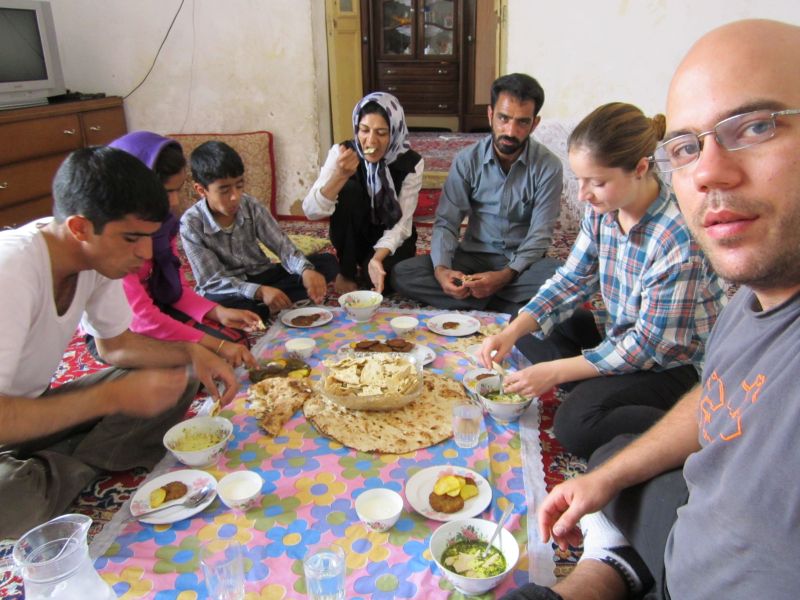 |
Mohammed, the homestay owner, acted also as a guide, showing us the village and explaining facts of daily life in this harsh environment. The top of the mud brick buildings are domed to allow the use of bricks for roofs, since wood beams are expensive and hard to come across.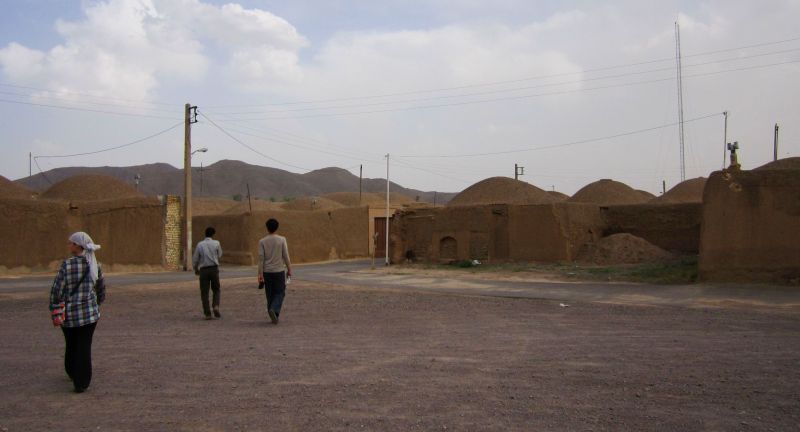 |
Of great interest was the Persian carpet manufacture. We learned about the different types of carpets, materials and patterns.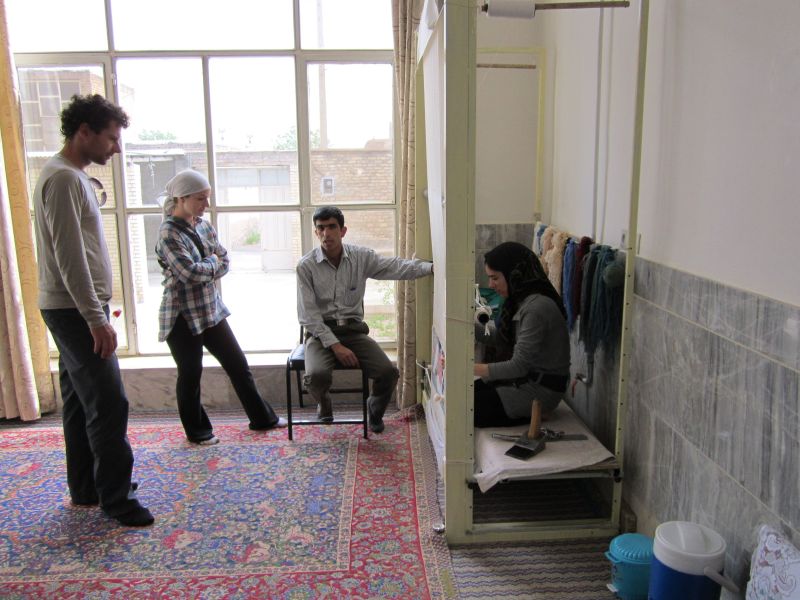 |
Without Palomina, we decided to explore the area with the bicycles, provided for free by our host.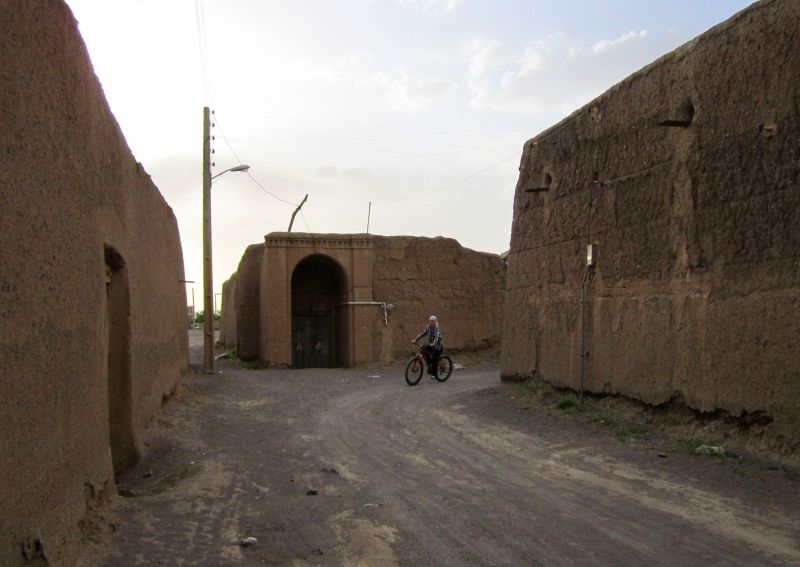 |
Two more people arrived. Sebastian, from Potstdam, on the way to Mumbai, and Michel, from Neuchâtel, en route towards China via Iran, Turkmenistan etc. with his fancy bike.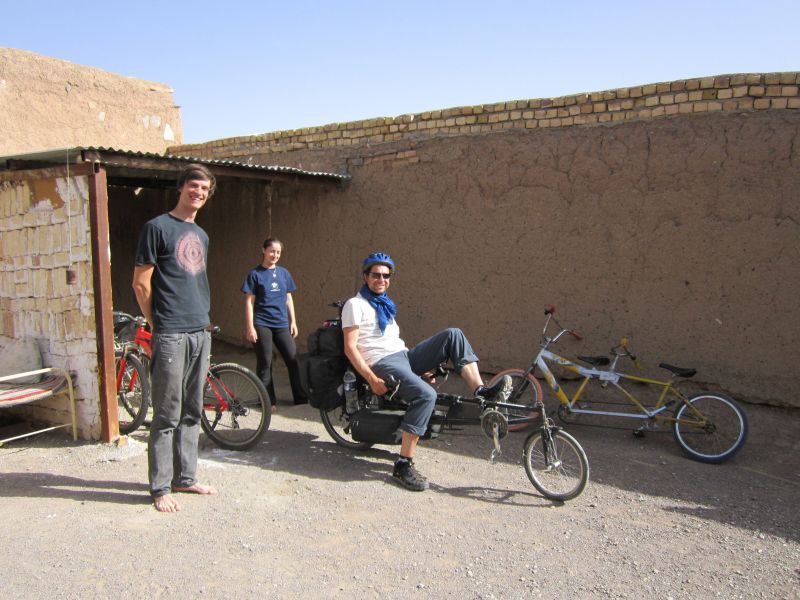 |
It seems like Iranians have always been concerned about gender separation. In this case, a traditional door is equipped with different bells for men and women, so the people inside the house know to send a person of the same gender as the visitor to open the door.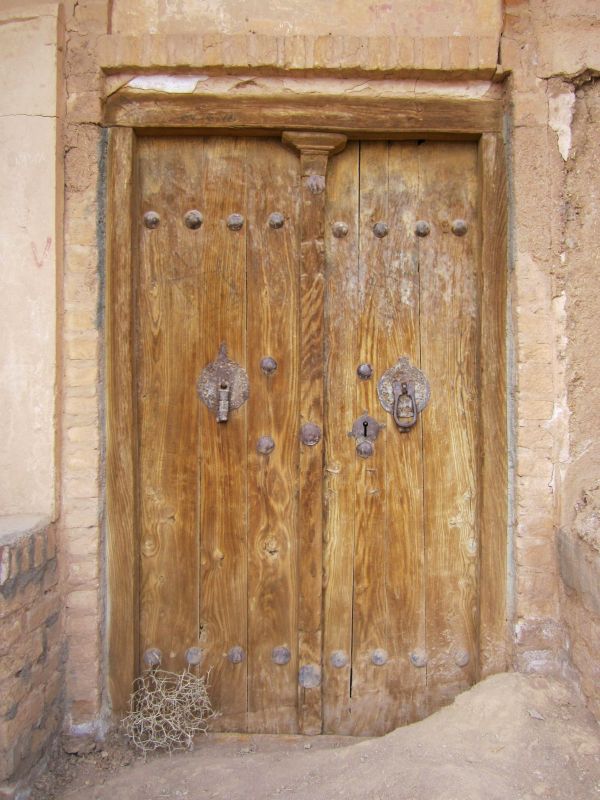 |
We spend the second night on the sand dunes, camping. Apart from the wind, it was very relaxing and much milder than Atacama.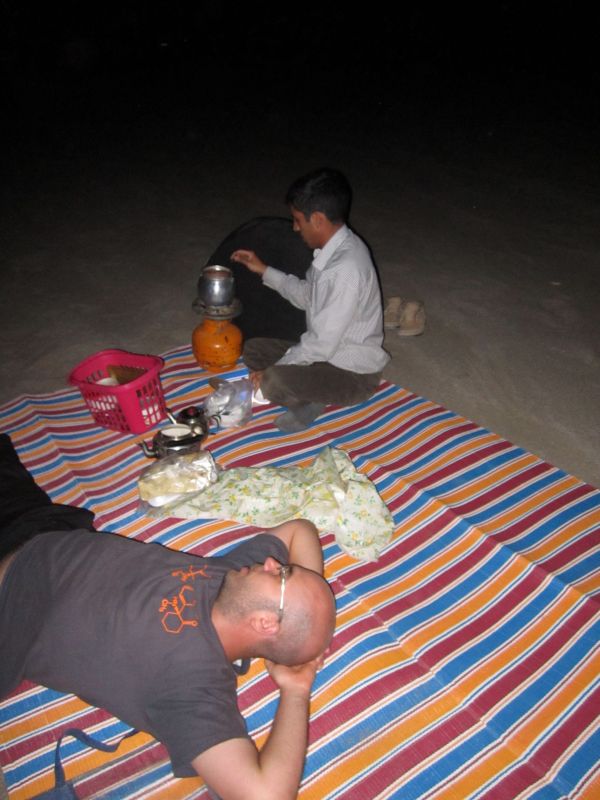 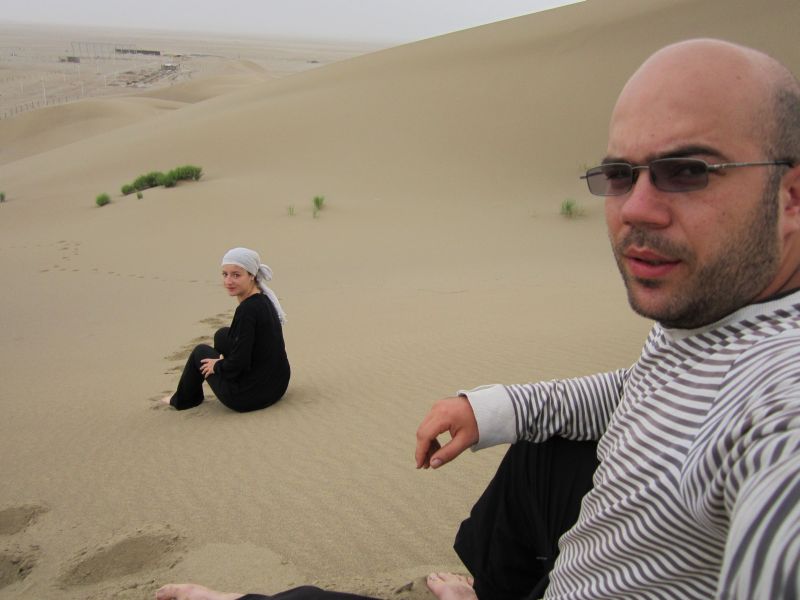 |
